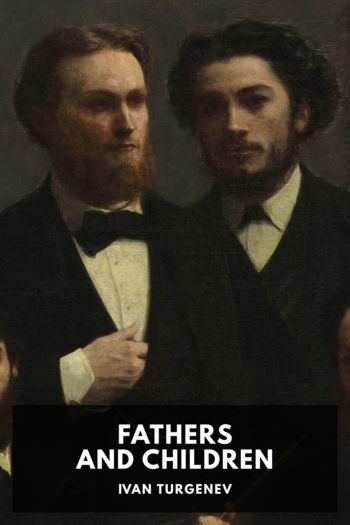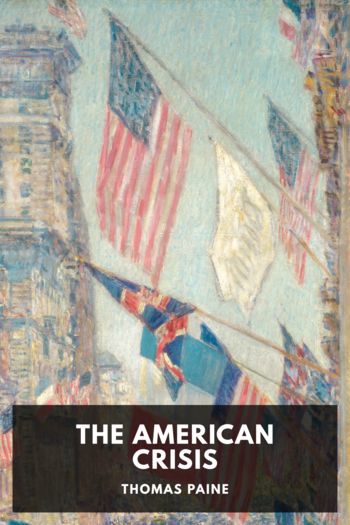Short Fiction, Vladimir Korolenko [finding audrey TXT] 📗

- Author: Vladimir Korolenko
Book online «Short Fiction, Vladimir Korolenko [finding audrey TXT] 📗». Author Vladimir Korolenko
“Please, … what do you think: will God hear that prayer?”
Grunya spoke softly, but all heard her. It seemed as if a light breeze had passed along the deck and in more than one soul the question of the pale girl found response: will God hear that prayer?
All were silent. … Their eyes involuntarily turned upward, as if they wished to follow in the blue of the evening sky the invisible flight of that strange and unintelligible but beautiful prayer. …
“Why won’t He? …” came the irresolutely soft words of a good-natured peasant. “You see, he’s not praying to anyone else. There’s only one God.”
“Yes, the Father. You see, he’s looking to heaven.”
“Who knows, who knows? …”
“It’s a hard question—the ways of the Lord. …”
A block creaked at the bow, the light of a golden star flew to the top of the mast; the waves splashed somewhere in the darkness; the distant whistle of an almost invisible steamboat reechoed above the sleeping river. In the sky the bright stars appeared one after the other, and the blue night hung noiselessly above the meadows, the mountains and the ravines of the Volga.
The earth seemed to be sadly asking some question but the heavens remained silent with its quiet and its mystery. …
The Village of God A Sketch from a Traveler’s Notebook IEarly one summer morning I put my knapsack on my shoulders and set out from Arzamas.
Southeast of the city stretched the slopes of a green mountain. A little white church welcomingly and mildly peered out through the trees which grew in large numbers among the graves and beside the cemetery on the pitted sides of the mountain were some strange white spots. …
As I drew near I saw that these were small and almost toy houses of old brick with peaked roofs covered with mosses and lichens. Three were shorter than a man—one, in the form of a chapel, was taller. The roofs supported eight-pointed crosses, and on the walls were the dark boards of icons. The faces had been worn away by the winds and beaten by the rains.
I was told in Arzamas that these were all that was left of a unique village. In earlier times the entire mountainside had been covered with similar structures, as if a city of dwarfs had been laid out opposite to the real city with its gigantic churches and its monastery. The people called this place the “Village of God.”
Every year, on the Thursday of the Seventh Week after Easter the local clergy come to this mountain and wave their censers in the air amid these peculiar houses; the incense perfumes the place and the choir sings:
“Remember, Lord, Thy slaughtered servants and those who died an unknown death, whose names, O Lord, Thou knowest. …”
For whom they pray, for whom they sing the requiem, whose sinful souls are remembered in this prayer—neither the people of Arzamas who stand around and pray nor the clergy of Arzamas can tell definitely. … For them the service in the disappearing “village” is merely a pious and revered custom, a relic of the hoary past. …
And this past was sad and bloodstained. …
Arzamas was once on the frontier. The city guarded the border. The breeze which raised the dust on the distant steppes here roused great anxiety and alarm. Some looked toward the steppes with terror, others with uneasy hopes. … And every spark borne hither on the winds from the Don or the Volga, found here a goodly supply of inflammable material in oppression, violence, injustice, slavery, and grievous national suffering.
This was the soil where was planted the Village of God.
IIIt began, according to tradition, in the days of Stepan Timofeyevich Razin. … The workmen of Stenka robbed even in Arzamas. They fled from here to the north of Nizhny Novgorod, nested for a while in the village of Bolshoye Murashkino, and then passed on to Lyskovo and Makary. At their heels came the generals of the tsar and the bloody vengeance of the followers of Razin was followed by the not less bloody vengeance of the tsar.
During Peter’s reign in 1708, Kondrashka Bulavin sent from the free Don his “pleasant letters.” “Young atamans, lovers of travel, free people of every class, thieves and robbers! He who wishes to go with the military campaigning ataman Kondraty Afanasyevich Bulavin, he who wishes to raid with him, to travel gloriously, drink and eat as he will, ride over the open fields on fine horses, let him come to the black mountains of Samara.” … So wrote the rebellious ataman to the Cossacks of the Don, to the Ukraine, and the Zaporozhian Syech. Along the Volga, through cities north and south, to worthy commanders, flew the message and also to the villages and towns. In long and businesslike letters, carefully composed with a view to their political effect, he set forth all the oppressions of nobles and magnates, all the wrongs and injustice under which the land had long been suffering. The appeals of Kondrashka inflamed the whole land, more blood was shed, and savage was the vengeance of the people. … Again from Moscow advanced the regiments of troops in accordance with the terrible order of Tsar Peter:
“… Go through the cities and villages which have joined the robbers, burn them to the last straw, slay the people and torture the leaders on wheel and stake. … For this plague cannot be removed, except by sternness. …”
In those days there was no lack of sternness and after the pacification even the cruel tsar wrote to Dolgoruky, not to execute the brother of the slain Bulavin, for many had joined the revolt from misapprehension or “from compulsion.”
The rebels were carried to Arzamas. Scaffolds, stakes, and wheels were erected along the roads and the city during one of these periods of vengeance was, in the words of an eyewitness quoted by Solovyev, “like hell”;





Comments (0)